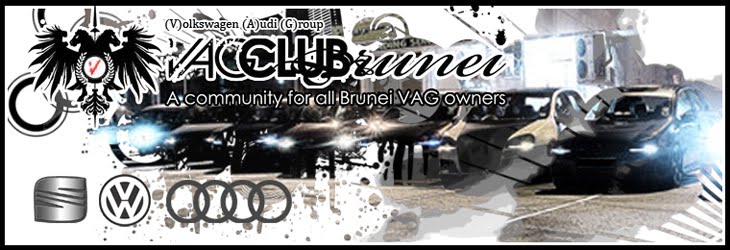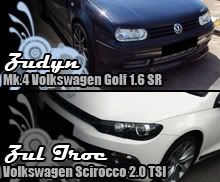So have you ever thought that putting a BOV on our engines is right? Yeah, you love those "psssh" sound coming under that front hood. It makes bystanders watch you and go, "Wow, atu raggat Golf nya!" .. Of course, any websites will suggest putting on a BOV over the OEM Discharge Valves may prolong the life of the turbo. Well typically actually.
But that's on certain engines. For our types of engines? To honest and straight fact: Putting a BOV on our types of engines is a big (and I mean, very big) no-no and may prove catastrophic to the engine! Warmed up already? Read on before it's too late!
BOVs and DVs
First thing first, what's a BOV and what's a DV? What are the differences?
BOV (Blow-off valve): It's a vacuum-actuated valve designed to release pressure in the intake system of a turbocharged car when the throttle is lifted or closed. The way this works is that when your car accelerates, this spools up the turbo and creates boost to the engine which makes the performance due to extra air into the throttle body. Thing is, during wide-open throttle (WOT), constant boost is fine and does not damage the turbo at all. But when you let go off the pedal, the throttle body lifts/closes and any extra air in the intake chargepipe has nowhere to go.
To prevent damaging the turbo due to compressor surge, this is where BOV comes in handy. The valve opens by the vacuum-actuated valve, and excess air exits through the valve, and does the "pssh" sound out of the horns and into the atmosphere.

(Most BOVs has alot of different designs and shape but they still do function the same to each other)
DV (Or Recirculating/Diverter Valves): Now, they actually work the same. Except for one difference: As the name suggests, the air pressure is re-circulated back into the non-pressurized end of the intake (before the turbo) but after the mass airflow sensor.
Most typically, a DV doesn't produce a "psshh" sound compared to their BOV counterparts due to the fact and how they function, they don't release the air to the atmosphere. But still, the sound will be pronounced louder when installing an aftermarket DV, Short-Ram Intakes and Cold Air Intakes setup.

(Physically, they're almost identical but still different to BOVs. Instead of a horn, they have an outlet which connects to the non-pressurized end of the intake)
So why DV and not a BOV?
Our VAG turbo system is a closed loop system by which all unused boost that is spooled during off throttle and gear shifts must be re-routed within the system; it cannot be vented to the atmosphere due to the dependence on the MAF and ECU to properly read and interpret air flow dynamics within the intake tract. Therefore BOV's (Blow-Off Valves) are not used because they create a rich air/fuel condition (i.e. less air to fuel ratio) which will damage the catalytic converter, create soot on the exhaust pipes, and cause occasional misfiring (due to the purged air) which will result in ECU miscalculated timing adjustments and other errors.
For this reason, a BPV (By-Pass Valve) or DV (Diverter Valve) is needed to recirculate the purged air and keep it within the intake tract.
Still, there's majority of crowds out there with VAGs still think that using BOV still proves some beneficial. But this is only true to those that runs a standalone-ECU or doesn't at all, use MAF/O2 Sensors to calculate Air/Fuel mixture but only rely on cam sensors and throttle position sensors. Afterall, by default.. our VAG-Turbo ECUs are programmed to do so!
So I'm not saying that we can't enjoy those BOVs benefit (If the loud "psshh" sound is so much a big plus to you), there's a hybrid BOV/DV valves that were produced by aftermarket companies designed for our cars.

These valves have the benefit of both valves, and are highly recommended for those people who want the blow-off valve sound and still recirculates the air back to the system. Of course, the release valve is adjustable so that not too much air releases to the atmosphere (which then again, functions BOV as a whole which is a big no-no).
Ideally with these types of valve by most accounts, valves should be set at 30% Atmospheric and 70% recirculation. Of course, more Atmospheric release would mean louder blow-off sound but you would want some air going back to the system to prevent turbo-lags or too rich-conditions to the system.
----
So there you have it, I've explained the most common misconception ever and I hope I could help with some of the things I've just said and illustrated. If you have a BOV in your turbo-ed VAG car (And I'm pointing to those 1996 and above), GET IT OFF and buy an aftermarket DV/Hybrid Valves if you want the sound!












No comments:
Post a Comment